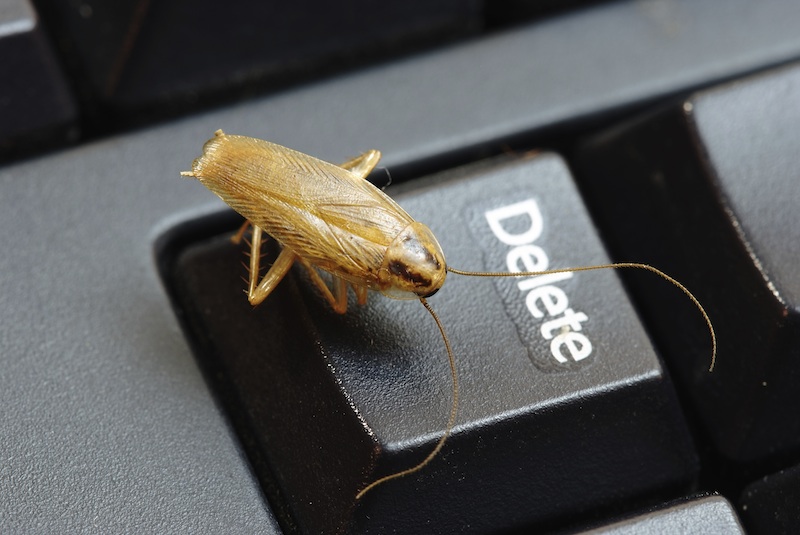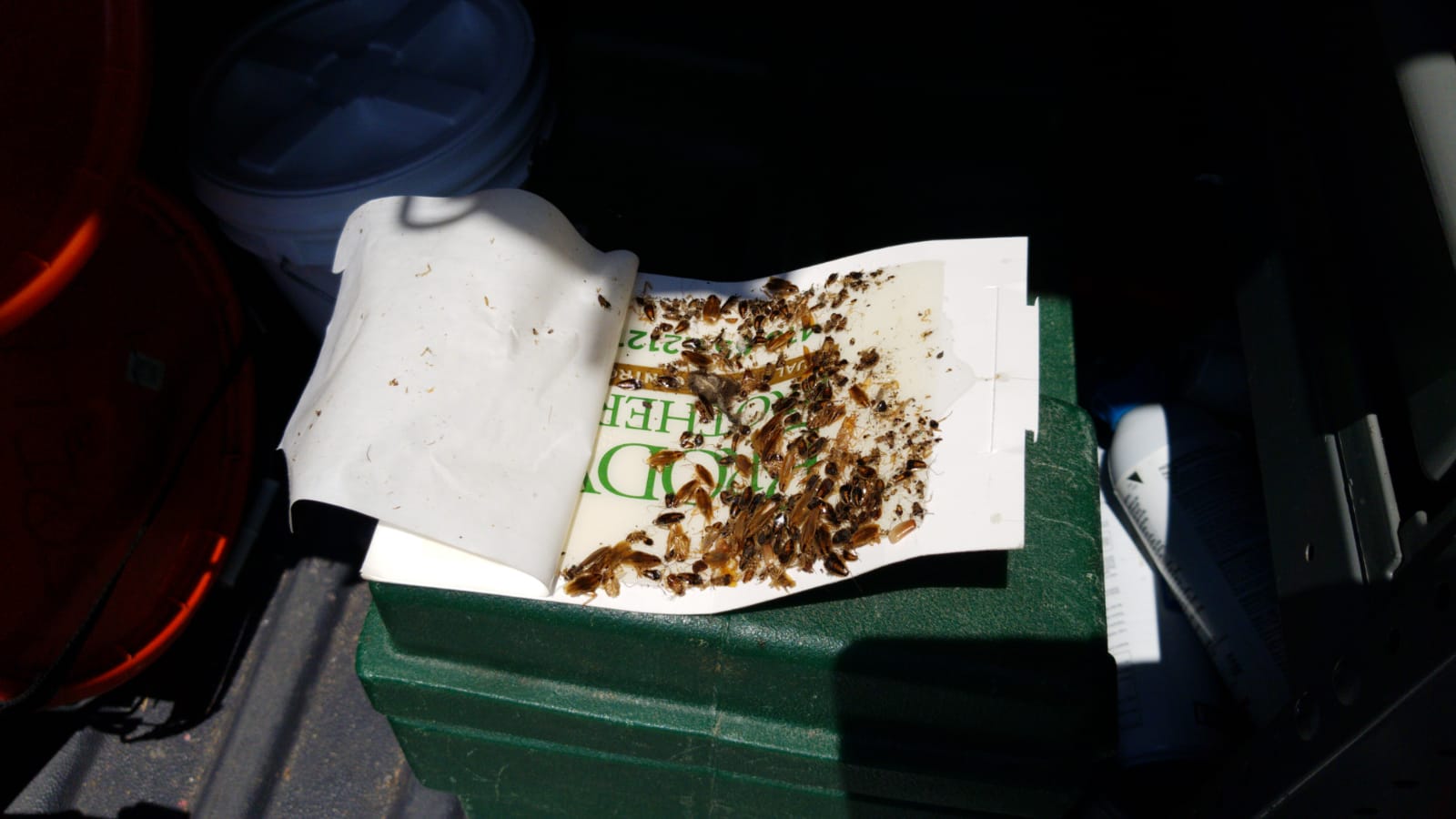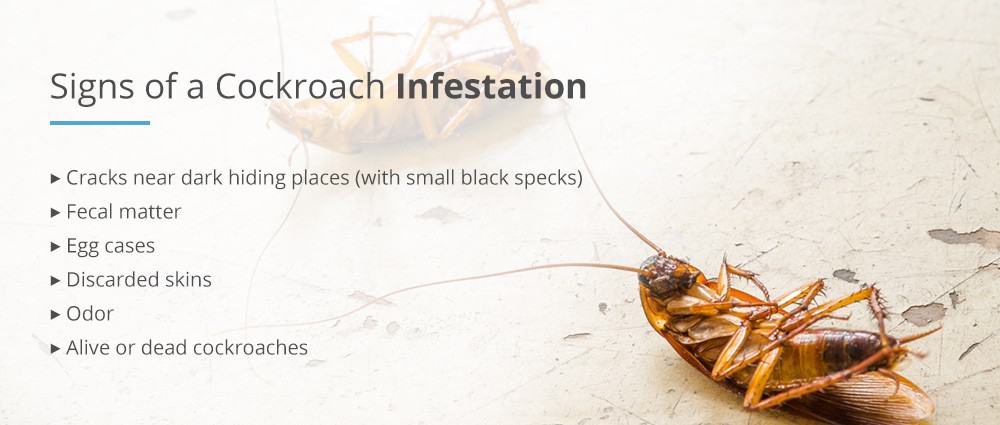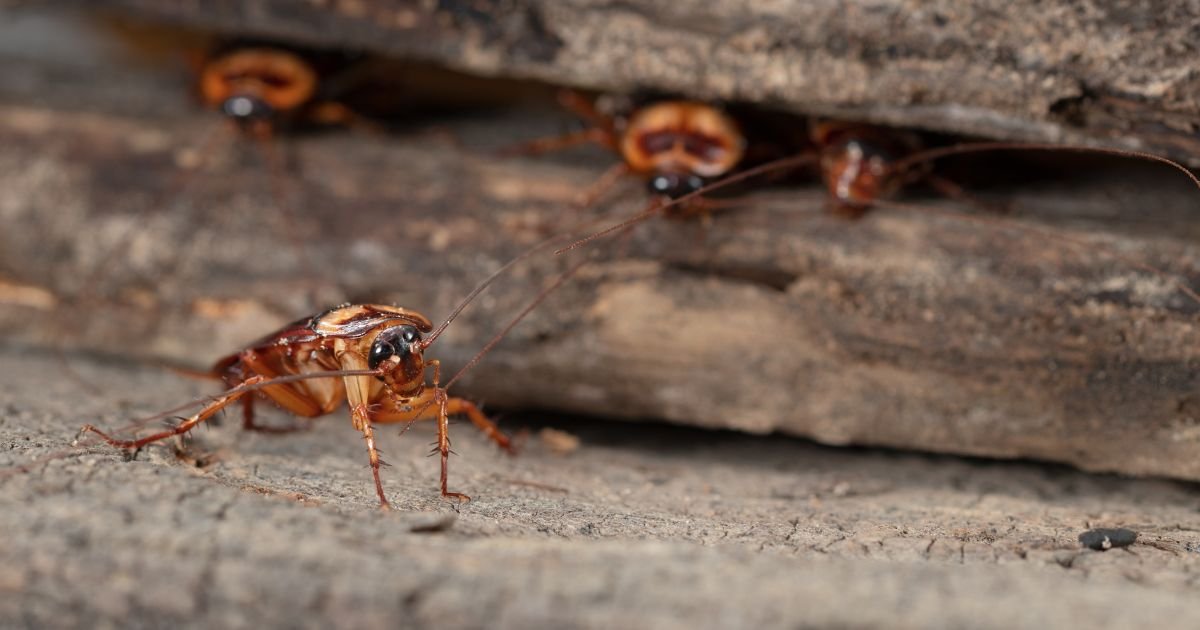Cockroaches typically hide in dark, moist, and secluded areas during the day. They are often found in crevices, behind appliances, and inside cabinets.
Understanding the daytime hiding spots of cockroaches is crucial for effective pest control. These resilient and adaptable pests seek out environments where they can remain undisturbed and close to food sources. In kitchens, they might nestle in the gaps behind stoves or refrigerators, where crumbs and spills aren’t uncommon.
Bathrooms also offer perfect hideouts, as cockroaches thrive in the dampness found under sinks and along shower tracks. Even in less obvious places like bedroom closets or within electronic devices, these insects may take refuge. Homeowners looking to combat these unwelcome guests must first identify and then target these hideaways with strategic cleanliness and, if necessary, professional extermination methods.
Cockroaches: Masters Of Hide And Seek
Cockroaches excel at concealment, slipping into the smallest of gaps with ease. During the day, these pests vanish, challenging homeowners to uncover their secret lairs. Understanding where and why they hide is crucial for controlling infestations.
Traits That Make Them Elusive
Cockroaches are equipped with attributes that make them particularly skilled at staying under the radar:
- Flexible bodies: They flatten and fit into narrow spaces.
- Small size: This allows them to hide almost anywhere.
- Quick reflexes: They dart away at the slightest disturbance.
- Coloration: Their color often matches their surroundings, making them harder to spot.
These traits help roaches avoid detection during routine human activity. It takes a keen eye to spot signs of their presence.
Natural Instincts For Survival
Cockroaches have honed survival instincts that drive their daytime hiding behaviors.
- Photophobia: They avoid light, seeking out dark areas instead.
- Thigmotaxis: They prefer tight spaces where surfaces touch their bodies.
- Nocturnal nature: Active at night; rest in secluded spots during the day.
- Hiding spots: Usually found in kitchens and bathrooms where moisture and food are available.
To uncover their hideouts, focus on areas with water and food sources, alongside cracks and crevices throughout the home.
Typical Hiding Spots In Homes
The quest to uncover the daylight hideouts of cockroaches can feel like a detective mystery. These elusive pests find the most secretive nooks and crannies to evade our sight. Comprehending these typical hiding spots is crucial for effective cockroach control.
Kitchen Concealments
The kitchen is a haven for cockroaches. Plenty of food, water, and warmth create the perfect hideout. Let’s unveil their favorite spots:
- Under the sink: Moisture is a draw for cockroaches.
- Behind appliances: Refrigerators and stoves provide warmth.
- Inside cabinets: Crumbs and spillages attract them.
- Under floor mats: They provide cover and comfort.
Bathroom Retreats
In the bathroom, cockroaches seek moisture and peace. They often hide in:
- Under the sink: A popular roach gathering spot.
- Behind the toilet: Quiet and less disturbed.
- In drains: Direct access to water.
- In wall voids: Entering through small cracks or crevices.
Furniture And Appliance Voids
Furniture and appliances offer excellent cover for roaches during daylight:
- Sofa gaps: The space beneath provides a dark shelter.
- Electronics: Warm and cozy for the roaches.
- Underneath heavy furniture: Rarely moved, provides stability.
- Inside clocks: The inner mechanisms are perfect hideouts.
Commercial Spaces: A Cockroach Haven
Cockroaches prefer to remain unseen, thriving in dark and humid places. During the day, these pests find commercial spaces particularly inviting. Below, we’ll explore the usual hangouts of cockroaches in various commercial environments.
Restaurant Hideaways
Restaurants provide the perfect mix of food and shelter for cockroaches. These critters often sneak into:
- Kitchen equipment: Spaces behind ovens and fridges
- Storage areas: Shelves, especially with food containers
- Drains: Under sinks and floor drains
Regular cleaning and sealing off potential entry points keep these pests at bay.
Grocery Stores And Warehouses
Cockroaches adore the abundance of food sources found in these locations. They are typically spotted:
- Cardboard boxes: Ideal for laying eggs
- Bulk storage bins: Often undisturbed and full of food
- Pallets: Provide hidden spaces underneath
Maintaining strict cleanliness standards and inspecting deliveries can reduce infestations.
Office Spaces And Crevices
Offices may not seem like a cockroach destination, yet these busy spaces have plenty of hiding spots:
- Filing cabinets and desk drawers
- Wall voids and false ceilings
- Electrical outlets and switch boxes
Eliminating clutter and regular vacuuming deter these unwelcome guests.

Credit: www.pestxpert.com.au
Influence Of Light And Temperature
The influence of light and temperature plays a crucial role in the behavior of cockroaches. Understanding these factors reveals the secret world of cockroaches during the daytime. This knowledge is essential for effective cockroach management.
Seeking Darkness
Cockroaches have an instinctual drive to find dark places when the sun rises.
- They prefer to hide in cracks and crevices.
- Underneath appliances and inside wall voids are common hideouts.
- Dark cabinets and drawers also serve as perfect shelters.
Light serves as a signal for cockroaches to find refuge until night returns.
Thermal Preferences
Cockroaches thrive in warm environments. They use their sense of temperature to find comfort zones.
Areas near engines or motors that emit heat attract cockroaches during cooler days. On warmer days, they might seek cooler spaces to maintain their ideal body temperature. Here’s how they choose:| Temperature | Preferred Hiding Spots |
|---|---|
| Warm | Beneath sinks and water pipes |
| Cool | Near refrigerators or air conditioners |
Materials And Clutter: Supporting The Stealth Mode
Cockroaches are crafty creatures of stealth, especially during the daylight hours. Secretive and shrewd, they find refuge in our homes without a trace. ‘Materials and Clutter: Supporting the Stealth Mode’ is their game. Within our domestic confines lie a plethora of ingenious hiding spots that these resilient insects exploit.
Paper Products And Cardboard
Paper and cardboard offer cockroaches prime real estate for making themselves at home. The reason is simple: these materials are easy to burrow into and provide a cozy environment. Common hiding spots within homes include:
- Bookshelves
- Storage boxes
- Paper stacks
Cockroaches are attracted to the glue in cardboard and often make a meal of it. Recycling bins and garages are hotspots. Keep them clean and uncluttered to dissuade these pests.
Cluttered Spaces
Clutter is a cockroach’s paradise. It provides them with ample hiding spaces and protection from predators. Examples of cluttered areas where cockroaches thrive include:
| Location | Reason for Attraction |
|---|---|
| Closets | Dark and undisturbed |
| Basements | Humid with potential food sources |
| Laundry Rooms | Warm with hiding nooks |
To reduce the chance of cockroach infestations within these clutter-prone zones, regular decluttering is essential. Organize and dispose of unnecessary items. This limits the spaces available to cockroaches, making it harder for them to hide.
How Cleanliness Affects Cockroach Hiding Behavior
Cockroaches are crafty creatures that seek out hiding spots in our homes. Understanding how cleanliness affects cockroach hiding behavior is crucial to keeping them at bay. A clean environment offers fewer hiding spaces and resources for these pests, influencing where and how they hide during the day. Let’s delve into the impact of cleanliness on their conduct.
Impact Of Hygiene
Hygiene plays a pivotal role in determining the appeal of a space for cockroaches. Dirty, cluttered areas provide ideal hiding places for them to thrive out of sight. Simple actions like regular cleaning and decluttering can disrupt these havens, forcing cockroaches to seek shelter elsewhere.
Cockroaches prefer warm, moist environments, so keeping areas dry and well-ventilated can deter their residency. Clean spaces often lack the conditions cockroaches need, reducing the number of potential hiding spots available during the day.
Food Availability
Access to food heavily influences cockroach behavior. A clean kitchen with no food crumbs or spills is unattractive to these pests.
- Seal food containers tightly.
- Clean up crumbs and spills immediately.
- Dispose of garbage promptly and correctly.
These practices cut off food sources, making your home less inviting for cockroaches and impacting where they hide.
| Cleanliness Factor | Impact on Cockroach Hiding Spots |
|---|---|
| Clean Spaces | Fewer hiding options, leading to less cockroach activity. |
| Decluttered Areas | More open space and fewer objects to provide cover. |
| Dry, Well-Ventilated Environments | Reduced moisture and warmth make hiding harder for cockroaches. |
By maintaining good hygiene and controlling food availability, your home becomes less appealing to cockroaches, influencing their daily hiding patterns and helping to keep these unwelcome guests outside where they belong.
Detecting The Unseen: Signs Of Daytime Hiding
Welcome to the covert world of cockroaches and their clandestine daytime hideouts! Despite their nocturnal escapades, cockroaches need shelter from the light and danger during the day. Uncovering these stealthy insects requires a keen eye for subtle clues. Let’s explore the telltale signs that signal their presence even when they’re out of sight.
Spotting Droppings
Cockroach droppings are a clear indicator of their lurking nearby. These droppings resemble black pepper or coffee grounds. Finding these specks? Be alert for a roach hideout!
- Small droppings: Likely from a smaller species.
- Larger pellets: Suggest larger roaches at play.
Use a flashlight and inspect dark areas. Check behind appliances, drawers, and cabinets. Droppings usually cluster around their hiding spots.
Unusual Odors And Sounds
Cockroaches can produce distinctive odors. It’s a musty, oily scent. It intensifies with more cockroaches.
Listen closely at night. Scratching sounds within walls? That could be a roach congregation. In heavy infestations, a quiet clicking noise might be heard.
Staying vigilant for these signs can avoid larger infestations. Regular cleaning and inspections are key to keeping your home roach-free. Find signs? Take prompt action to manage an infestation.

Credit: www.brodybrotherspestcontrol.com
Evicting The Invaders: Prevention And Removal
Welcome to “Evicting the Invaders: Prevention and Removal”, a crucial guide for homeowners. Cockroaches are not just a nuisance, but they pose health risks too. Finding their hiding spots during the day is key. Here, learn effective strategies to prevent and remove these unwanted guests for good.
Sealing Entry Points
Block these bugs from entering in the first place. A thorough inspection of your home is necessary. Identify any cracks or gaps and seal them promptly. This can include:
- Door and window frames.
- Utility pipes.
- Baseboards.
- Vents and chimneys.
Weather stripping and caulking are excellent tools for sealing openings. Regular maintenance ensures new entry points do not develop.
Natural Deterrents And Professional Solutions
Leverage natural deterrents to keep roaches out. Cockroaches hate certain natural substances, such as:
| Natural Deterrent | How to Use |
|---|---|
| Baking Soda | Combine with sugar as bait. |
| Diatomaceous Earth | Spread in areas where roaches travel. |
| Boric Acid | Apply carefully in crevices. |
| Essential Oils | Peppermint or eucalyptus oils as repellent. |
Consult with a professional for serious infestations. Pest control experts can offer tailored solutions. They often use:
- Inspections to pinpoint hiding spots and entry points.
- Industrial-grade pesticides or bait stations.
- Regular follow-up treatments to prevent a recurrence.
Remember: Complete eradication requires a multi-faceted approach. Combining home repairs, natural deterrents, and professional help will ensure the best outcome in evicting these resilient invaders.

Credit: pestech.com
Frequently Asked Questions
Where Do Cockroaches Hang Out During The Day?
Cockroaches typically hide in dark, warm, and humid places during the day. Common hideouts include under sinks, inside cracks and crevices, behind appliances, and within wall voids.
How Do You Lure A Cockroach Out Of Hiding?
To lure a cockroach from hiding, place food bait, like sugar or bread, in an open area at night. Keep the environment quiet and dark, as they are nocturnal and more likely to emerge. Use sticky traps near the bait for effective capture.
What Does It Mean If You See A Cockroach During The Day?
Seeing a cockroach during the day may indicate an infestation. Typically, cockroaches are nocturnal, so daytime appearances suggest their hiding spaces are overcrowded, forcing some to venture out.
Do Cockroaches Hide In Beds?
Cockroaches can hide in beds, particularly within mattress seams and bed frames, seeking warmth and food residue. Regular cleaning helps prevent infestations.
Conclusion
Understanding cockroach hideouts is crucial for effective pest control. These elusive pests seek dark, moist environments to evade daylight. By identifying common hiding spots, homeowners can target these areas and reduce infestations. Remember, professional exterminators offer the most comprehensive solutions for a roach-free home.
Stay vigilant and keep those unwelcome visitors at bay.
Related posts:

I’m MD Tanvir, and I bring years of expertise gained from working closely with pest control companies to the forefront. My journey in the industry has inspired me to launch Bug Battler, a platform aimed at equipping people with the know-how to combat pests autonomously. Through Bug Battler, I aim to empower individuals with practical insights to tackle pest infestations effectively.

